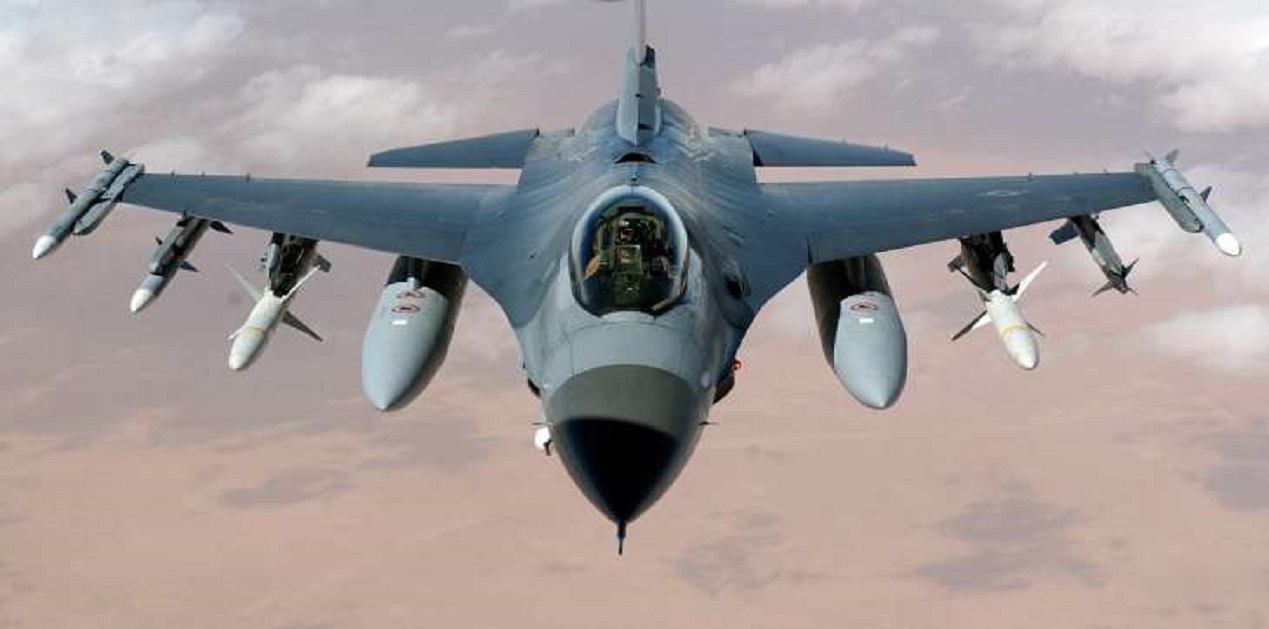On 7 September 2022, the US notified the US Congress that it had made a “determination” approving a possible “Foreign Military Sale (FMS) to the Government of Pakistan of F-16 for sustainment and related equipment for an estimated cost of $450 million.” The decision has been taken at the request of the Pakistani government. The scope of the work, interalia, includes[1]:
- F-16 aircraft structural integrity,
- electronic combat,
- engine management, engine component improvement, aircraft and engine hardware and software modifications; the supply of aircraft and engine spare parts, accessories and support equipment,
- classified and unclassified software and software support,
- publications, manuals, and technical documentation,
- precision measurement, calibration, lab equipment, and technical support services.
The press release clarified that the sale “does not include any new capabilities, weapons, or munitions.” The justification given for the sale is that it supports the foreign and military objectives of the US government in the region. More specifically, it will help retain “interoperability with U.S. and partner forces in ongoing counterterrorism efforts and in preparation for future contingency operations.”[2] The deal will benefit several US defence contractors including Lockheed Martin Corporation, Fort Worth, Texas and many others.
According to US procedures laid out under the US Arms Export Control Act[3], the President must notify Congress about the proposed arms sales to foreign governments 30 days before the export licences are issued. In theory, congress can block the sale by adopting a joint resolution but in practice, this has never happened. So, the Pakistan deal will go through once the procedural formalities are completed.
India
India and US have not been on the same page on Russia since the Russia-Ukraine war erupted in February 2022. The US decision to support and maintain the F-16 aircraft fleet of Pakistan, which had been ageing due to lack of maintenance, spare parts and maintenance support, adds an element of discord between two strategic partners.
The US is careful in stating that the “proposed sale … will not alter the basic military balance in the region.” That is, however, debatable. India will need to watch the situation carefully. It cannot remain oblivious to the possibility of more such deals in the future.
The US decision signals the resumption of US-Pakistan military cooperation in the name of counterterrorism. It is testimony to the success of Pakistan’s diplomacy in Washington since the appointment of Shahbaz Sharif as Prime Minister of Pakistan. The former Prime Minister Imran Khan was highly critical of the US. Sharif has taken a more reconciliatory tone towards the US. The US is also softening its stance. Recently, Pakistan ISI chief Lieutenant General Nadeem Anjum visited Washington. Pakistan army chief Gen Bajwa has solicited US help in the release of the IMF tranche for Pakistan. The floods in Pakistan have given further stimulus to the growing contact between the two countries.
The US policies towards Pakistan have been inconsistent. Not going back too far, President Trump had suspended all security cooperation with Pakistan. With F-16 maintenance support deal, Biden seems to be reversing that policy, overlooking Pakistan’s extremely negative role played in Afghanistan which led to US’s humiliating exit in August 2021. Top US military leaders blamed Pakistan for its duplicitous role in Afghanistan. Yet, Pakistan US relationship pendulum is swinging back under Biden.
The present deal will come as a shot in the arm for Pakistan’s Air Force as F-16 fleet get a new lease of life. Pakistan Air Force has four squadrons of F-16 aircraft of eighties vintage. Their performance has been degrading due to the non-availability of spare parts, software upgrades and maintenance support from the OEMs.
According to Naval Jagota, Senior Fellow at the VIF, the Pakistan Air Force has 75 F-16 aircraft of 1980s vintage. The break up is as follows: 23 F-16A MLU Fighting Falcon; 21 F-16B MLU Fighting Falcon; 9 F-16A ADF Fighting Falcon; 4 F-16B ADF Fighting Falcon, 12 F-16C Block 52 Fighting Falcon; 6 F-16D Block52 Fighting Falcon. He feels that “this sale will provide for periodic airframe structure strength checks which would lead to either replacement of some airframe parts or strengthening of them. A software check and an upgrade would provide better fault analysis. An upgraded software version would remove the bugs and make existing systems like weapons, radars, communications and electronics work better. Certain key parts needed to operate these aircraft would be replaced or added to the logistical inventory hence enhancing the availability of the platform and thus reducing the downtime of these platforms”[4].
The upgrade of Pakistan’s F-16 squadrons will surely impact India’s national security irrespective of what the Americans say. Pakistan has used F-16 fighters in the aftermath of Balakot strikes by the Indian Air Force.
American critics may argue that India has also defied the US by acquiring S-400 missile defence system from Russia, US’s arch enemy. But there is a big difference. S-400 in no way affects US national security directly whereas strengthening Pakistan’s F-16 fleet has an immediate impact on India’s security. The counterterrorism excuse is a mere eye wash.
There is a long history of simultaneous antagonism and cooperation between the US and Pakistan. By and large, Pakistan has succeeded in convincing the US of its indispensability to US objectives in the region. The US has withdrawn from Afghanistan but terrorism remains intact in the region. The US influence in the region has reduced. When US forces were in Afghanistan, they needed Pakistan’s help with logistics and other support. Pakistan exploited the US vulnerabilities. Now when they are not there, they still need Pakistan for their residual counterterrorism effort as the Al Qaeda and ISIS threats remain intact. One should not be surprised if soon Pakistan is taken off the Financial Action Task Force’s (FATF’s) grey list, with US support!
The deal shows that US dependence on Pakistan continues. Coming weeks after the killing of Al Qaeda leader Ayman al-Zawahiri in a US drone attack in Kabul, the deal gives force to the speculation that Pakistan had cooperated with the US in this operation.
It is puzzling as to why the US State Department has chosen this moment to strengthen Pakistan’s military capability. Has it not taken into consideration the impact it can have on Indo-US cooperation which has grown over the years into robust strategic cooperation? This transaction could jeopardise the burgeoning India-US military cooperation worth tens of billions of dollars and also raise questions about the US's reliability as a strategic partner.
The lesson for India is that in the wake of Russia-Ukraine war, relations among states have become even more transactional. India will have to contend with the fact that an embattled Pakistan will reach out to the US, Russia and others in its national interest. India cannot take strategic partnership with any country for granted. We must do what we have to do to strengthen our own security. The best way to do so is to continually strengthen our conventional and other deterrence capabilities so that we are not taken in by surprise.
Endnotes :
[1]https://www.dsca.mil/press-media/major-arms-sales/pakistan-f-16-case-sustainment
Accessed on 11.9 2022
[2]Ibid.
[3] “Arms Sales: Congressional Review Process”, Congressional Research Service, 10 June 2022,
The Arms Export Control Act (AECA) “contains a mechanism for Congress to adopt a joint resolution of disapproval for arms sales notified by the President; Congress has never successfully blocked a proposed arms sale via such a resolution. Congress may adopt legislation to block or modify an arms sale at any time up to the point of delivery of the items involved.”
https://sgp.fas.org/crs/weapons/RL31675.pdf, accessed on 11.9.2022
[4]Naval Jagota’sprivate communication with the author, 11.9.2022.
(The paper is the author’s individual scholastic articulation. The author certifies that the article/paper is original in content, unpublished and it has not been submitted for publication/web upload elsewhere, and that the facts and figures quoted are duly referenced, as needed, and are believed to be correct). (The paper does not necessarily represent the organisational stance... More >>
Image Source: https://resize.indiatvnews.com/en/resize/newbucket/730_-/2022/09/f-16-fighting-falcon-1662618758.jpg











Post new comment